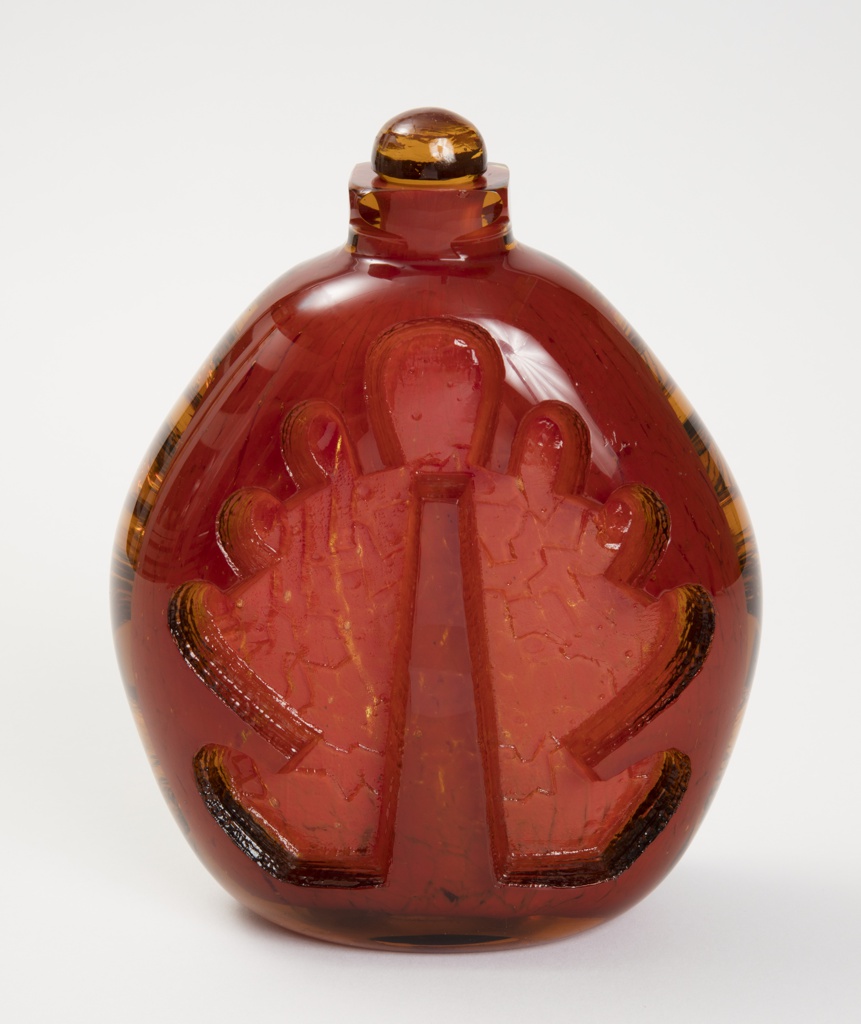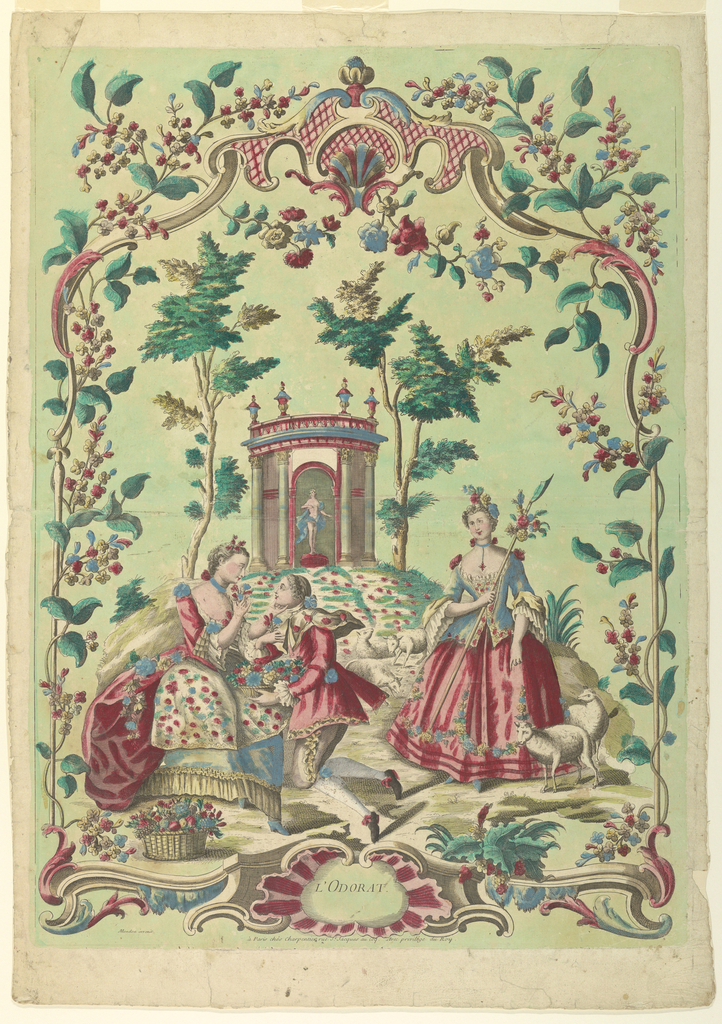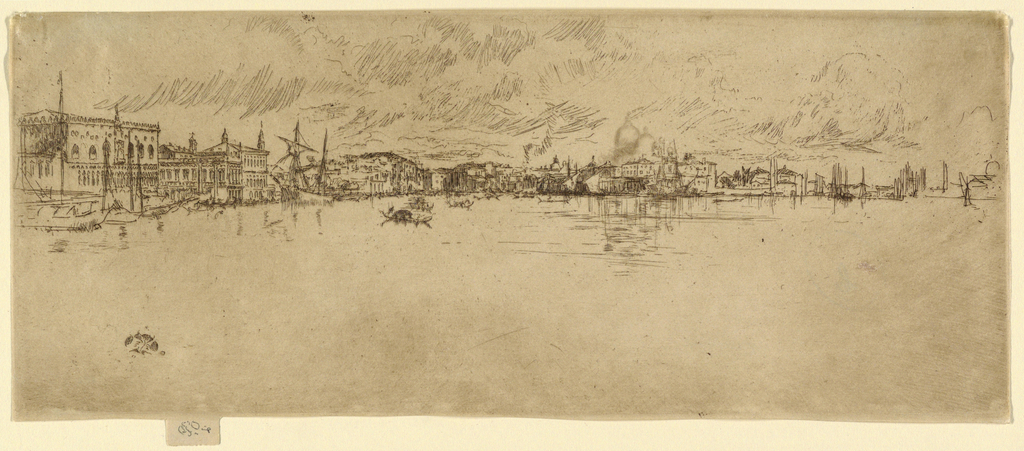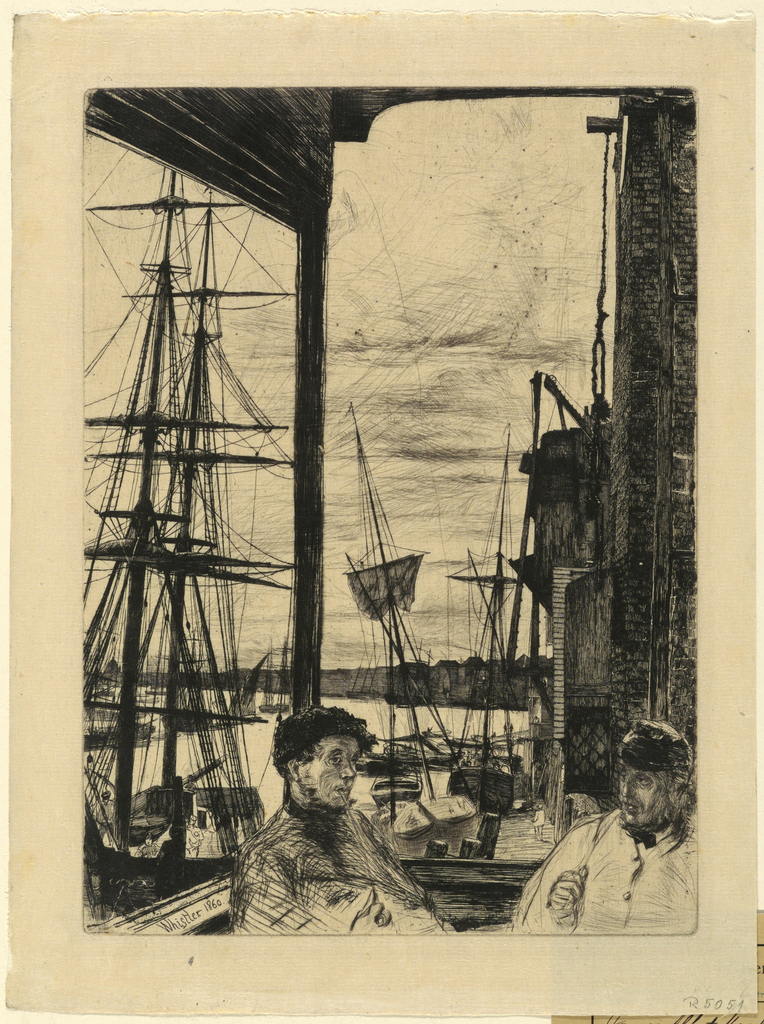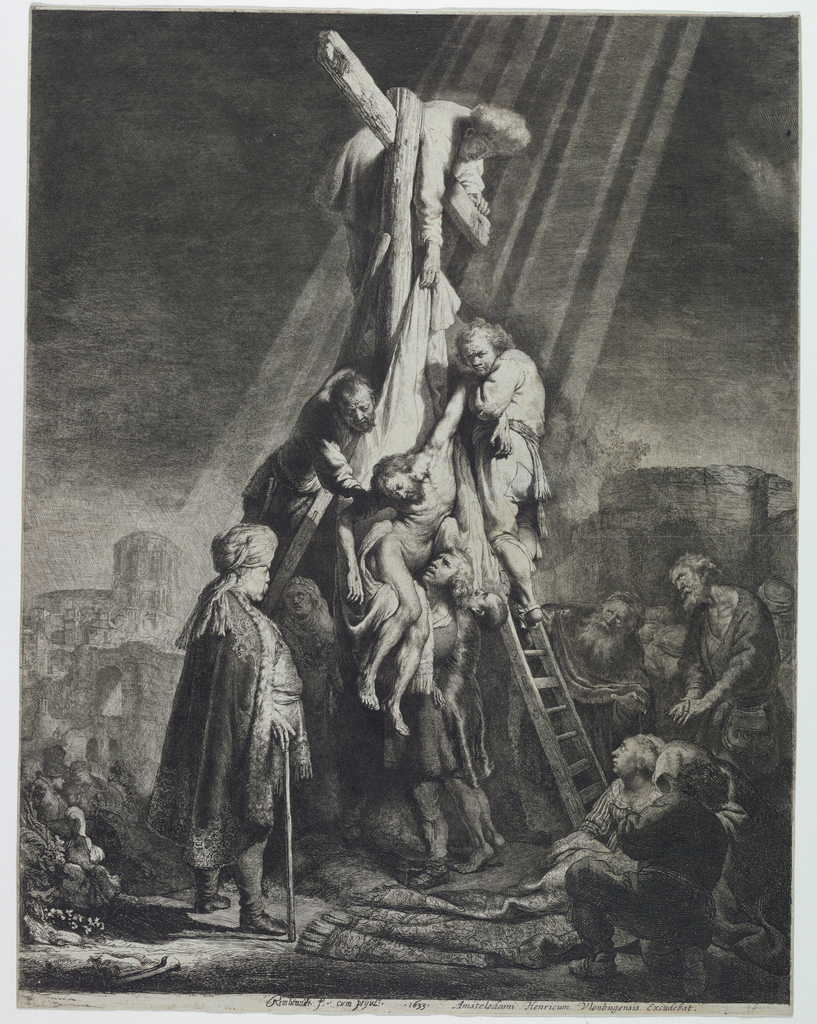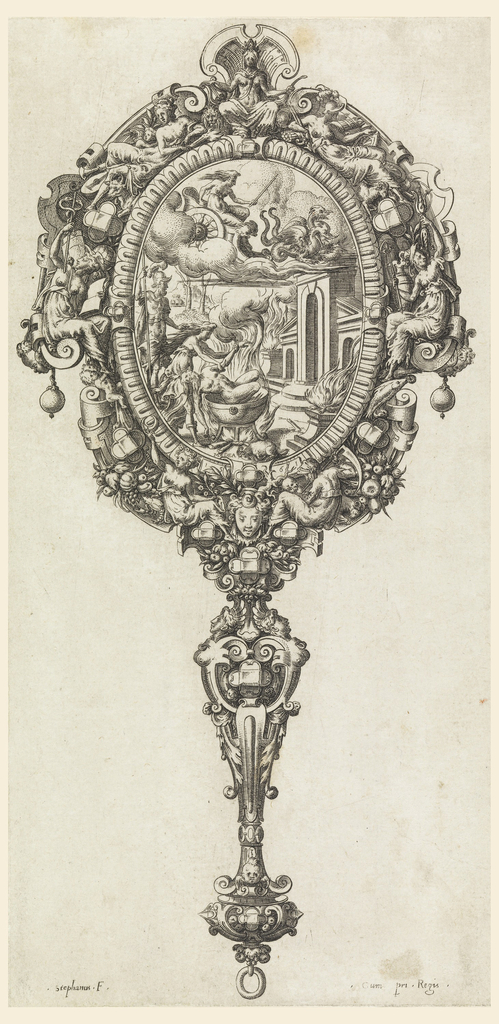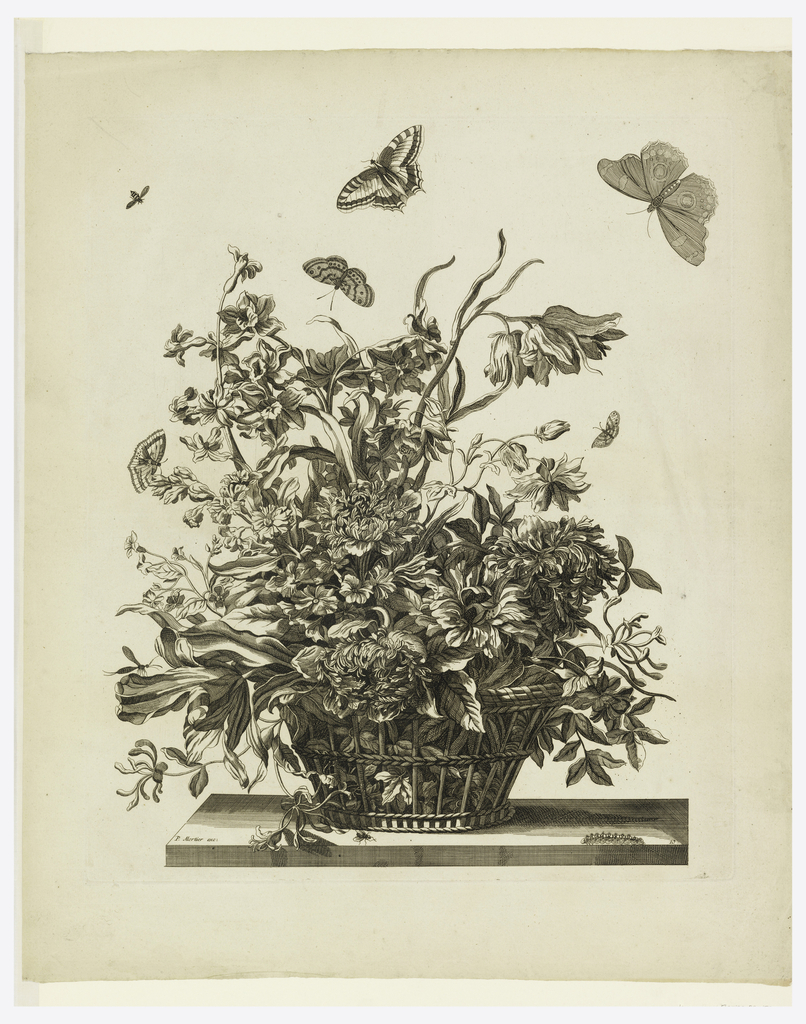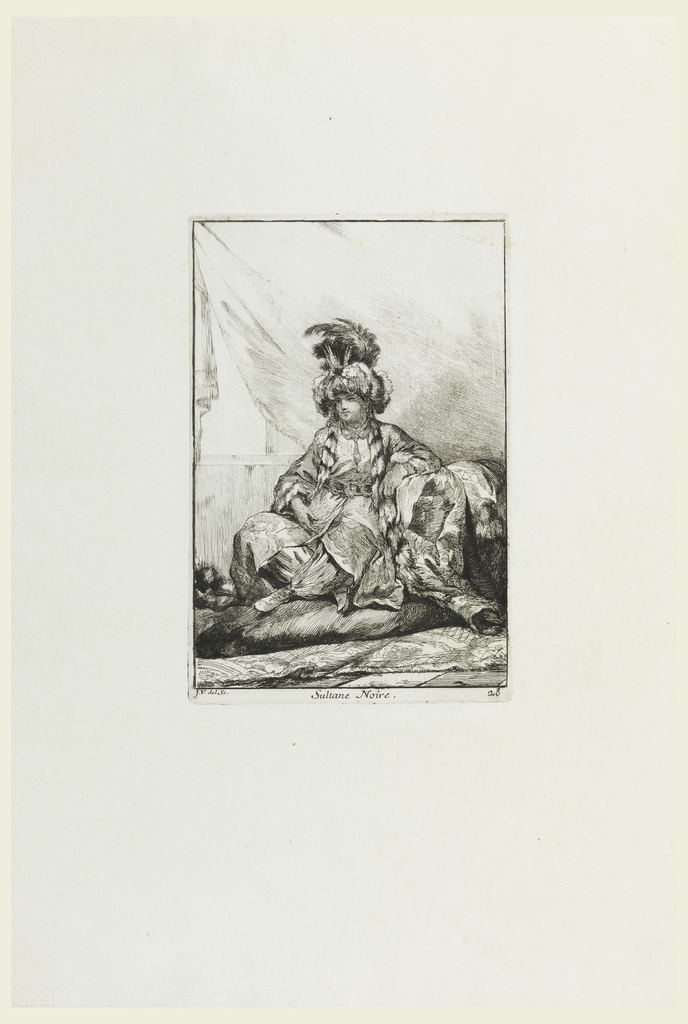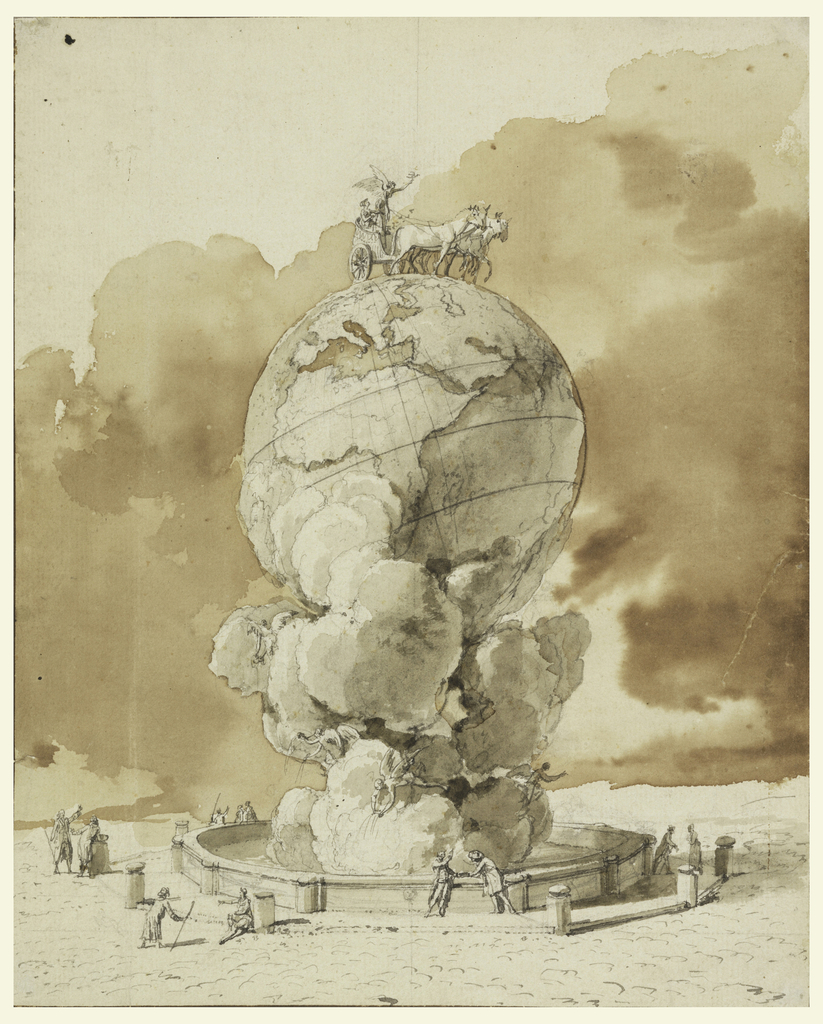Artist Maurice Marinot translated the bold modern painting style of Fauvism into inventive glass objects.
In celebration of our new exhibition The Senses: Design Beyond Vision, this Object of the Day post explores the multisensory experience of an object in Cooper Hewitt’s permanent collection. This bright, hand-colored print dated to about 1750 and signed by François-Thomas Mondon depicts a group of figures in a landscape composed of trees, flowers, and...
In 1879 James McNeill Whistler (1834-1903) was commissioned by the Fine Art Society to produce twelve etchings of Venice, Italy with the expectation the series would be completed by Christmas and sold in London. Provided with a stipend for his expenses Whistler arrived in Venice in September 1879 and remained in Italy until November 1880,...
This print by James Abbott McNeill Whistler is part of a series of images the artist produced depicting the East London neighborhoods of Rotherhithe and Wapping in 1859–60. While English painters had traditionally avoided portraying these industrial districts of the city throughout the nineteenth century, Whistler’s Thames series takes for subject the city’s poorest workers...
Rembrandt Harmensz van Rijn (Dutch, 1606–1669) was a Baroque painter and printmaker best known for his self-portraits and illustrations of biblical scenes. He trained under two masters: Jacob van Swanenburgh (1571–1638), who specialized in cityscape paintings and scenes of hell and the underworld, and Pieter Lastman (1583–1633), who specialized in history paintings. Given his education with...
Sixteenth-century Europe saw, with the apogee of humanism, the reactivation of intellectual and creative energies towards classical antiquity, through which the decorative arts flourished. Designs were highly imaginative, with increasingly complicated, fantastical motifs, in which material opulence coexisted with humanist knowledge in the form of historical and mythological themes.[1] A case in point is this...
Jean-Baptiste Monnoyer (French, 1626-1699 ), a painter, designer and engraver, created many prints like this work, Plate 10 from Set of Flowers in a Basket which is dated to 1680. Early flower prints were primarily used for botanical textbooks, but by the end of the seventeenth century, they were considered a higher artistic medium. Prints like...
In preparation for the festivities of Carnival in 1748, a group of students at the French Academy in Rome conspired to dress collectively as Turkish men traveling in a sultan’s caravan to Mecca. The pensionnaires crafted homemade costumes, painting linen to resemble sumptuous brocades and hanging oversized turbans with faux pearls and feathers. Their fantastic...
In the aftermath of the French Revolution, many public squares required new monuments that celebrated Revolutionary ideals instead of the might of the fallen monarchy. Several fascinating proposals followed including a suggestion by Jacques-Louis David who suggested in 1793 that a large statue of Hercules be erected on Place de Pont-Neuf with each limb of...
